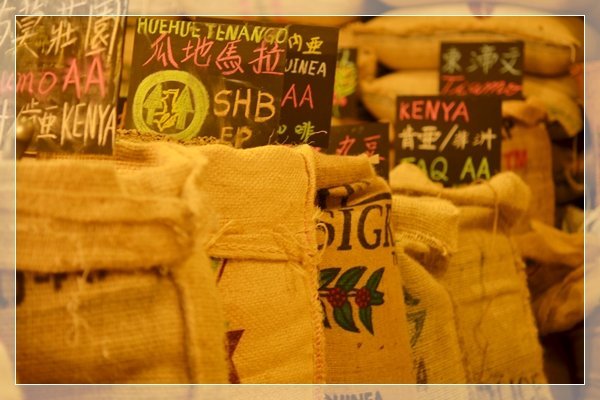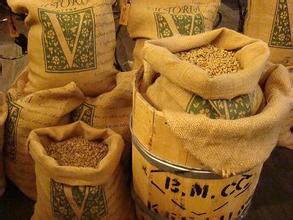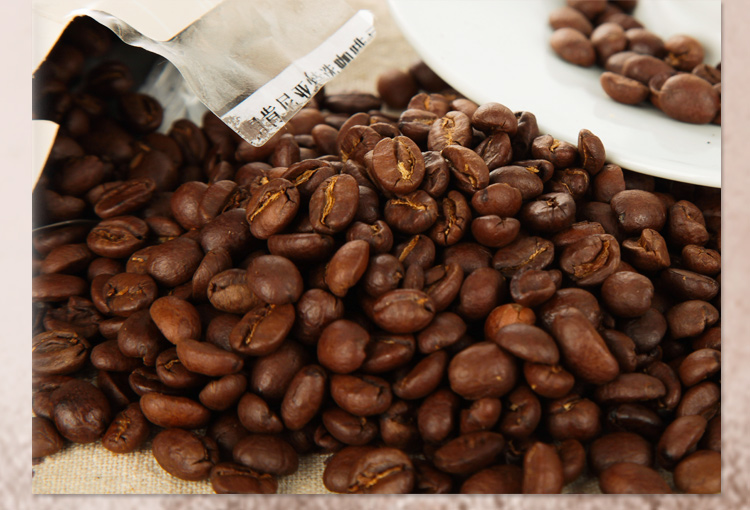Introduction of Ethiopian sidamo Sidamo G2 Coffee and the practice of hand Coffee
Main points: see that some friends say to buy coffee powder directly, I personally recommend people in large and medium-sized cities, it is better to buy fresh coffee beans and grind them themselves. To make a good cup of coffee, the most fundamental thing is to have fresh and high quality coffee beans.
If you buy better by hand mill, you can make sure that the coffee powder is evenly ground. If the grinding is not uniform, it will make the coffee taste not "pure". Because of the different contact area, hot water extracted from coarser coffee powder is much less than from fine powder at the same time. When the extraction time is just enough to fully extract the "good taste" from the coarse powder, it is already over-extracted from the fine powder-there will be some flavors that we do not want to appear. The main purpose of hand-made single product is to taste the original flavor of coffee, and it is to enlarge a certain characteristic of coffee flavor to taste it carefully. Therefore, we should try our best to ensure that the extraction is uniform rather than mixed with various flavors.
water. Now everyone pays attention to the soft water for drinking water, and the soft sailor tastes better. The water temperature is 85-95 degrees Celsius, too high temperature will cause coffee to have a scorched taste, and too low temperature will give coffee an unpleasant sour taste (just right coffee will also have a light sour taste, but this sour taste is pleasant, such as light fruit acidity.)
Pay attention to the warm cup. All utensils used in the process of hand brewing should be kept warm so that the taste of the coffee is warmer and moist.
The thin-nosed pot for hand flushing can be purchased separately, or you can choose some common utensils instead, as long as you ensure that the flushing flow is fine and stable. Of course, try to keep warm as much as possible.
According to my experience, 250 milliliters of coffee for every 15 grams of coffee powder is an appropriate proportion.
The rest is some simple process: put the filter paper into the filter bowl, add a small amount of water, let the filter paper "serve", and there is no air bubble between the filter paper and the filter bowl; grind the coffee powder and load it evenly (this process is called cloth powder. Some people think that the uplift in the middle of the powder pile can make better coffee, while others think that a hole should be dug in the middle of the powder pile. This depends on personal understanding); slowly flush the hot water of about 92 degrees into the coffee powder, controlling the amount of water to drop just one drop from the bottom of the powder pile; let the coffee powder fully absorb the hot water for about 40 seconds (at this time, if the coffee powder is fresh enough, you will see the coffee powder obviously expand); empty the containers that hold the coffee under the filter bowl (including the hot water for the warm cup and the drop of hot water just dropped for soaking the coffee) The water temperature dropped to about 90 degrees in these 40 seconds, just right for the start of hand flushing; slowly flushing water and drawing circles in one direction from the center of the powder pile, circle after circle. All right, drink it.
Country: Ethiopia
Grade: G2
Producing area: Sidamo producing area
Treatment: washing
Variety: Heirloom
Flavor: wild ginger, honey, citrus, lemon
Today, there are still a large number of wild Arabica coffee trees growing in many parts of Ethiopia, averaging between 4200 and 6800 feet above sea level. Now there is a trend of small cultivation, generally planting banana trees for shade at the same time, but due to lack of agricultural technology, herbicides and pesticides are less used.
Coffee is Ethiopia's main economic crop and the country's largest crop export and important industry. It accounts for 60% of Ethiopia's total export value and supports many small farms, as well as sugar, bananas and cotton. It is also Ethiopia's largest and important commodity export crop after oil, and it is also the largest export of Elaraby in Africa, with a total value of about US $300 million in 1997. in terms of total production, 94% are small farms and 6% are government agencies. because many farms are scattered and grow other crops, it has been difficult to integrate the figures correctly. However, the country's official coffee cultivation area is at least 400000 hectares, and the Ethiopian government encourages local farmers to improve their quality and productivity so that coffee farmers can expand their business scale and increase production capacity and exports.

Important Notice :
前街咖啡 FrontStreet Coffee has moved to new addredd:
FrontStreet Coffee Address: 315,Donghua East Road,GuangZhou
Tel:020 38364473
- Prev

Introduction of washed coffee types and methods of various coffees in Mushuyi treatment plant in western Rwanda
Points: See a friend said to buy coffee powder directly, I personally recommend people in large and medium-sized cities, conditions or buy fresh coffee beans to grind their own is better. To make a good cup of coffee, the most fundamental thing is to have fresh high-quality coffee beans; hand grinding to buy some, you can ensure that the coffee powder is evenly thick. If the grinding is uneven, it will make the coffee taste bad.
- Next

Introduction to the types of washed Yega Xuefei YCFCU Dama Coffee and the practice of all kinds of Coffee
Main points: see that some friends say to buy coffee powder directly, I personally recommend people in large and medium-sized cities, it is better to buy fresh coffee beans and grind them themselves. To make a good cup of coffee, the most fundamental thing is to have fresh and high-quality coffee beans; hand mill to buy better, can ensure that the coffee powder is uniform. If the powder is not evenly ground, the coffee will not taste good.
Related
- Detailed explanation of Jadeite planting Land in Panamanian Jadeite Manor introduction to the grading system of Jadeite competitive bidding, Red bid, Green bid and Rose Summer
- Story of Coffee planting in Brenka region of Costa Rica Stonehenge Manor anaerobic heavy honey treatment of flavor mouth
- What's on the barrel of Blue Mountain Coffee beans?
- Can American coffee also pull flowers? How to use hot American style to pull out a good-looking pattern?
- Can you make a cold extract with coffee beans? What is the right proportion for cold-extracted coffee formula?
- Indonesian PWN Gold Mandrine Coffee Origin Features Flavor How to Chong? Mandolin coffee is American.
- A brief introduction to the flavor characteristics of Brazilian yellow bourbon coffee beans
- What is the effect of different water quality on the flavor of cold-extracted coffee? What kind of water is best for brewing coffee?
- Why do you think of Rose Summer whenever you mention Panamanian coffee?
- Introduction to the characteristics of authentic blue mountain coffee bean producing areas? What is the CIB Coffee Authority in Jamaica?

